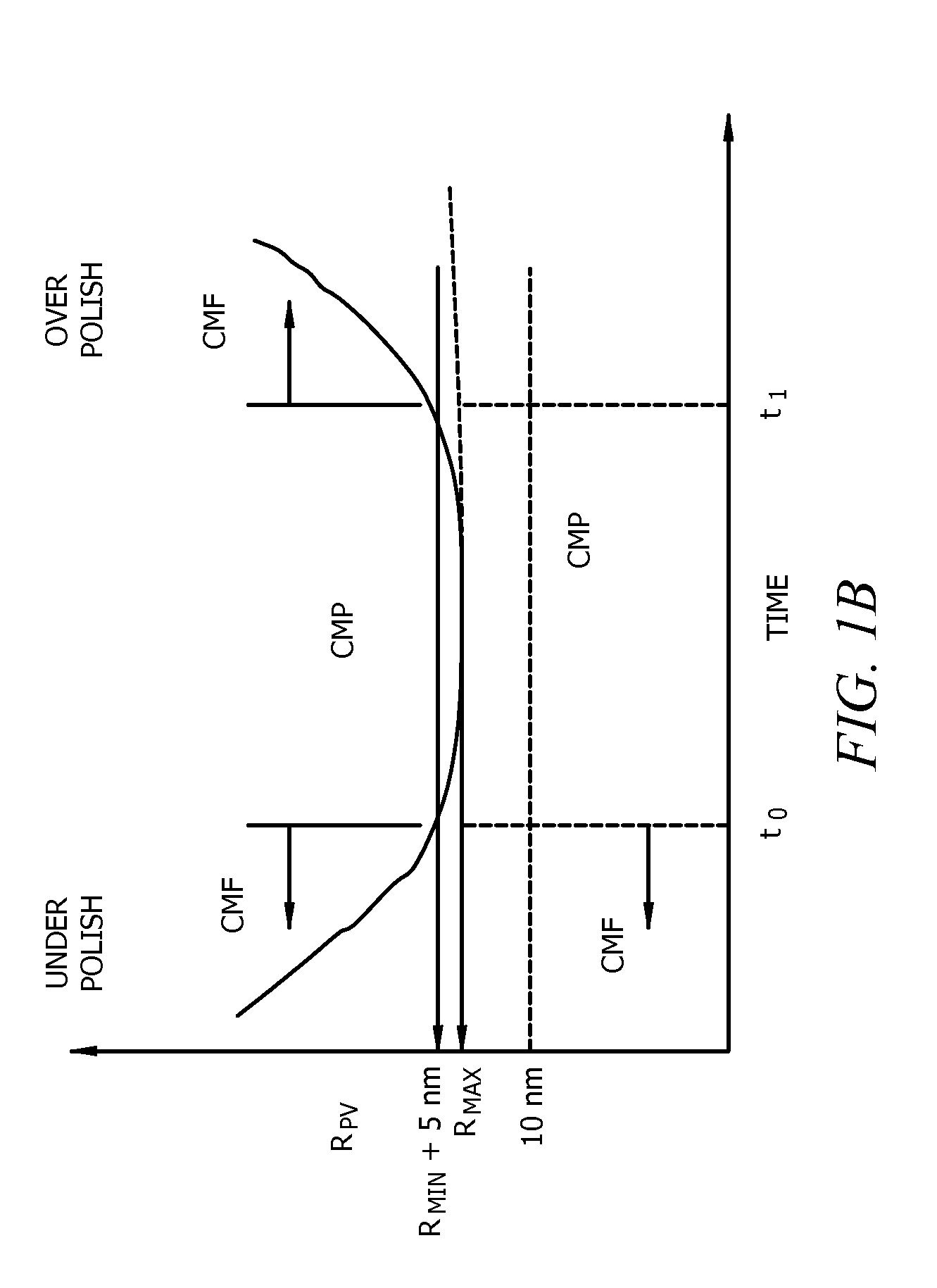Chemical mechanical fabrication (CMF) for forming tilted surface features
a technology of mechanical fabrication and tilting surface, which is applied in the direction of manufacturing tools, lapping machines, transportation and packaging, etc., can solve the problems of not being able to develop tilted surfaces, not being able to generally use them for forming tilted surface features, and affecting the polishing rate of the surface, so as to achieve different polishing rates, improve the polishing rate, and improve the effect of polishing ra
- Summary
- Abstract
- Description
- Claims
- Application Information
AI Technical Summary
Benefits of technology
Problems solved by technology
Method used
Image
Examples
example 1
[0072]This Example depicts the formation of microlens-like structures using the CMF method on silica or glass-like surfaces. Flat silica substrates were patterned by RIE to obtain approximately 700 nm tall substantially planar top pillars as shown in the depictions based on AFM images shown in FIG. 9A. The CMP method was then used in the underpolish CMF regime to create microlens structures shown. Using a 5 weight % 80 nm silica slurry, the pillars were polished at pH 4.0 and 2.5 psi using a Struers Rotopol machine. A politex pad was used for this fabrication process. The planarization time for such a structure was determined to be 250 seconds (corresponding to t0 shown in FIGS. 1A and 1B). The depiction based on an AFM image shown in FIG. 9B evidences the formation of microlens structures. The surface roughness of the structures measured was found to be less than 2A. The h / r ratio of the structures varied from 0.07 at the start of the polishing process and decreased to 0.04 after a...
example 2
[0073]This Example depicts positive and negative curvature structures using the CMF method on silica or glass-like surfaces. The flat silica substrates were patterned by RIE to obtain approximately 700 nm tall substantially planar top pillars as described above. The CMP method was used in the underpolish CMF regime to create microlens structures. Using 5% 80 nm silica slurry, the RIE structures were polished at pH 4.0 and 2.5 psi using a Struers Rotopol machine. A Politex pad was used for this fabrication process. The planarization time for such a structure was determined to be 250 seconds (corresponding to t0 shown in FIGS. 1A and 1B). A depiction based on an AFM image is shown in FIG. 10A along with FIG. 10B which is a plot of the height of the surface along the reference line shown in FIG. 10A which evidences the formation of both positive and negative curvature surfaces. The positive curvature surface is formed on protruding surfaces while negative curvature is formed recessed s...
example 3
[0074]This Example depicts the formation of cone-like structures using the CMF method on silica or glass-like surfaces using chemical etching methods. Flat silica substrates were patterned by chemical etching using a selective etch mask to obtain approximately 2,500 nm tall pillars shown in depiction based on an AFM image shownFIG. 11A. A plot of the height of the surface as a function of lateral distance is also provided. The etching conditions used were 5 vol. percent HF for 4 minutes. The CMP method was then used in the underpolish CMF regime to create a microlens structures. The CMF comprised using 5% 80 nm silica slurry with HNO3 to adjust the pH to 4, and the structures were polished at pH 4.0 and 2.5 psi using a Struers Rotopol machine. A Politex pad was used for this fabrication process. The planarization time for such a structure was determined to be approximately 700 seconds (corresponding to t0). The depiction based on an AFM image of the CMF structures are shown in FIG. ...
PUM
 Login to View More
Login to View More Abstract
Description
Claims
Application Information
 Login to View More
Login to View More - R&D
- Intellectual Property
- Life Sciences
- Materials
- Tech Scout
- Unparalleled Data Quality
- Higher Quality Content
- 60% Fewer Hallucinations
Browse by: Latest US Patents, China's latest patents, Technical Efficacy Thesaurus, Application Domain, Technology Topic, Popular Technical Reports.
© 2025 PatSnap. All rights reserved.Legal|Privacy policy|Modern Slavery Act Transparency Statement|Sitemap|About US| Contact US: help@patsnap.com



